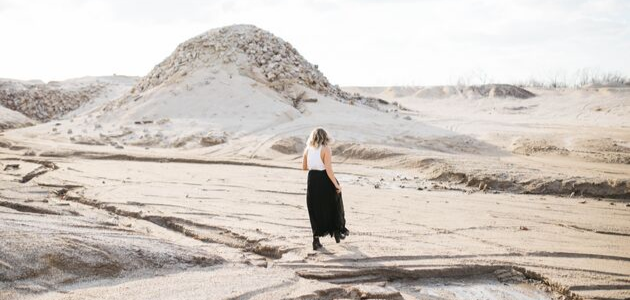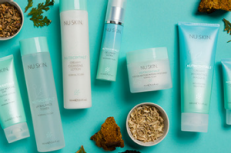How to Take a Skin-Cation from the Environmental Effects on Your Skin
October 30, 2019

Photo by Brooke Cagle on Unsplash
Your skin’s health can vary from day to day, but did you know that your environment could be playing a major role in all this drama? Environmental stressors like climate, weather, season, altitude, and travel are just a few things that can wreak havoc on your complexion.
Environmental Effects include:
1. Climate
Even if you’re wearing layers or putting on sunscreen, your climate has a big effect on your skin.
Tropical—A hot, humid beach is the recipe for a perfect vacation. But the moisture in the air also opens up your pores, making skin oilier and shinier.
Arid—At the other end of the spectrum, arid (desert) climates are hot and dry. This means less moisture and can lead to drab or dull skin.
2. Seasons
No matter where you live, your climate won’t be the same all year round. And just like different places, different seasons can have different environmental effects on skin.
Spring—Spring usually means warmer weather and higher humidity. And without help, this can mean more sweat, more oil, more clogged pores, and more acne.
Summer—Like spring, summer is usually hot and humid, so no relief for you skin here either.
Fall—Fall might be your favorite season, but it’s still not a good time to let your guard down with skin care. The temptation to take long, hot showers can dry out skin, damage the surface of skin, and aggravate conditions.
Winter—Winter can be downright mean to skin. Whether it’s the dry, cold air outside or the dry, hot air from central heating inside, your skin just can’t win. The cold tightens pores and reduces blood circulation, while the dry air steals moisture from skin and reduces the production of the protective oil called sebum. And less sebum means your skin is more sensitive to everything from pollution to everyday irritants (Kim, et al. 2017).

3. Weather
Rain, rain, go away. But don’t take my skin’s moisture with you! Changes in weather tend to mean changes in skin. Rain: drab skin. Sun: Dry skin irritation (Egawa, et al. 2002). Snow: a strange mix of dry, cold, drab skin.
4. Altitude
High air, dry air. Plus, the higher you are, the less oxygen there is, the more UV light you’re exposed to, and the colder and windier it gets. And all of that can cause skin irritation (Singh, 2017).
5. Pollution
There’s pollution everywhere nowadays, and it’s not just your lungs that are suffering. Your skin can protect you from tiny particles of who-knows-what for awhile, but pretty soon the bad stuff gets in and wreaks havoc on skin. We’re talking about visible premature aging (Vierkötter & Krutmann, 2017). Yeah, it isn’t pleasant.
6. Products
A night out might be fun, but not everything you put on your skin is necessarily good for it. Makeup can be a major culprit of skin damage and clogged pores if you don’t remove it before going to bed (Radcliff, 2017). And hair products DEFINITELY aren’t doing your skin health any favors when they mist or drip on your face. Add in wax, chlorine, and everything else we expose our skin to, and it’s no wonder skin needs a little boost to stay radiant.

Photo by Free Creative Stuff from Pexels
The good news is that there are ways to help your skin thrive, no matter your environment. Special medicines, skin care products, and skin care tips can help your skin adapt to changes in weather, air quality, altitude, seasons, and climate all day long. The key is to look for unique ingredients that have been shown to specifically target the effects of environmental stress on skin.
YOU MIGHT ALSO LIKE:
-
Bioadaptive botanicals, also known as adaptogens, are the big buzz in modern skin care. Why? As the name suggests, they’re plants that adapt to their natural environments. Basically, bio = environment, and adaptive = able to adjust to changing conditions. While it sounds pretty straightforward, there’s a bit more to it than meets the eye.
-
The Natural Makeup look is about using makeup to create the illusion that you’re not wearing any makeup—it’s literally a no-makeup makeup look. We all know how silly it sounds when you say it like it is, but this look is one of the biggest makeup trends for good reason. It’s quick, easy, and perfect for everyday activities—but there’s more to it than that. The natural makeup look is all about enha...

